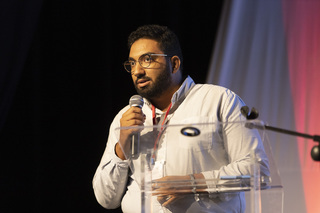Anti-UV external packaging bags: are they really useful?
6 October 2021
Jouini C, Claraz P, Benakouche S, Le Liboux J, Sabri A, Storme TPharmacotechnie pédiatrique, Pharmacie à usage intérieur, Hôpital universitaire mère-enfants Robert Debré, APHP.Nord, 48 Bld Sérurier 75019 Paris - France

Introduction
In order to ensure their physicochemical stability, the sterile preparations of our unit are overwrapped in sealed anti-UV bags. In a previous study, a photosensitivity model based on the use of folic acid was developed. In a context of market change, the objective of this work is to study and compare the effectiveness of the different External Packaging Items (EPI) available. We also evaluated the photoprotective benefit of adding an anti-UV EPI to our entire circuit.
Material and method
A 100 µg/mL solution of folic acid is distributed in bags and syringes to mimic our preparations. The different samples are exposed to a constant light for one month. In order to substantiate the degradation, a quartz cuvette, a bag and a syringe stored without EPI are the positive controls. The negative control is stored away from light. A series of samples is packaged; in transparent or anti-UV bags of different brands or in opaque overpacks. The folic acid content is assayed on D0, D1, D2, D3, D6, D7, D14, D28.
A second series of preparations (syringes, bags) is carried out in order to assess their exposure during our circuit. They are subjected to the same conditions of release, storage and dispensation as our preparations. For this series, the assays are carried out at T0, T30 min (exposure on the lab bench before release) then D1, D2, D3, D4 (exposure during storage time (fridge, room temperature)), then D4 + 1h (1h of exposure during transport) and finally D4 + 1h30 (30 min preparation before infusion in the care service)
The tests are carried out in triplicate.
The folic acid was assayed according to European Pharmacopoeia 10.4 method.
Results
No degradation was observed for preparations protected by opaque overpacks. There are no significant differences (pvalue> 0.05) between the degradations observed regardless of the type of "transparent" or anti-UV bag. The use of anti-UV EPI did not significantly limit the low degradation observed (pvalue> 0.05) during our circuit simulation
Conclusion
Anti-UV bags did not show superior photoprotective efficacy compared to transparent bags. Thus, their use seems to show no improvement compared to transparent bags under our conditions of use. Stopping their use may constitute an economical gain (UV bags are 5 times more expensive).
However, under our current storage conditions for preparations, even if exposure to light is controlled, the use of opaque overpacks for photosensitive preparations remains essential.